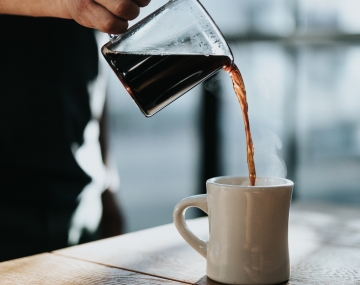Energy Drinks
We’ve all found ourselves pressed for time and facing a deadline. And the worst part about these situations is many times you’re out of energy. It could be the late afternoon, or worse yet, 10:30PM. Some folks turn to coffee, but some need more of a jolt. That “need” is what’s spurred the energy drink industry to incredible heights, and what we’ll be talking about today.
An energy drink is anything that contains a high level of caffeine or a similar stimulant. They are promoted as enhancing physical performance and mental alertness, and often contain sugar and complementary supplements like carnitine or vitamins. Some folks confuse energy drinks with sports drinks. It’s a common mistake, and the main difference is sports drinks are aimed at replacing electrolytes and water that is lost during exercise, while energy drinks are marketed to boost energy levels.
The very first energy drink emerged in 1960 when a Japanese pharmaceutical (Taisho) introduced something called Lipvitan-S. There isn’t a lot of literature surrounding whether the uptake was popular or not. From 1960 to the late 80s the energy drink business fell into a massive funk. But a brand that still reigns supreme today emerged in 1987, and ever since energy drinks have remained on everyone’s radar. Red Bull was that brand, and we have the Austrian, Dietrich Mateschitz, to thank. Mateschitz combined sugar, caffeine and the amino acid, taurine. Taurine occurs naturally in the body, and plays a significant role in regulating calcium levels and supporting the development of the nervous system. Some have mistaken the presence of taurine as to why many in the medical community caution against excess, energy drink consumption. But the real culprit is caffeine.
Some potential risks in too much caffeine consumption are type 2 diabetes, poor dental health, caffeine overdose (which can result in vomiting, nausea, palpitations and high blood pressure), and miscarriages or stillbirths in pregnant women. Most countries have labeling policies spelling out these potential side effects, and the energy drink sector for the most part remains highly regulated in this respect.
So now that we understand the risks, if enjoyed responsibly, energy drinks can indeed pick you up and also taste great. As we already mentioned, Red Bull continues to be the largest energy drink company worldwide. They are fast approaching $5 billion in annual sales, and in conjunction with one other company, absolutely dwarf the competition. That other company is Monster Beverage Corp, a fast-growing competitor of Red Bull and nipping at the Austrian’s heels in terms of dollar sales. From there, Rockstar Inc., High Performance Beverage, and Vital Pharma Inc. round out the Top 5.
Lastly, it bears mentioning that energy drinks have become increasingly popular amongst young people when combining them with alcohol. A popular drink amongst bars across the world is the Red Bull-Vodka mix. While many enjoy these responsibly, there are those that don’t, and combining high levels of caffeine with alcohol is not advised.
Energy drinks can provide a great pick-you-up, but just remember their caffeine levels are unnaturally high. Everything in moderation as your mother likely used to say.


Comments:
Login to leave a reply